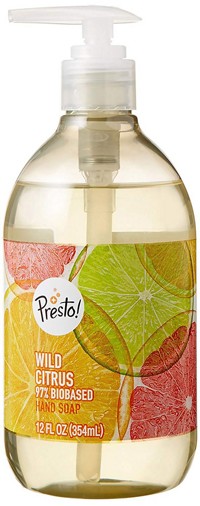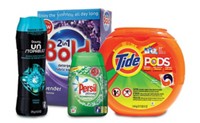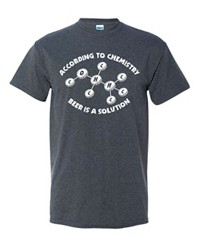Advertisement
Grab your lab coat. Let's get started
Welcome!
Welcome!
Create an account below to get 6 C&EN articles per month, receive newsletters and more - all free.
It seems this is your first time logging in online. Please enter the following information to continue.
As an ACS member you automatically get access to this site. All we need is few more details to create your reading experience.
Not you? Sign in with a different account.
Not you? Sign in with a different account.
ERROR 1
ERROR 1
ERROR 2
ERROR 2
ERROR 2
ERROR 2
ERROR 2
Password and Confirm password must match.
If you have an ACS member number, please enter it here so we can link this account to your membership. (optional)
ERROR 2
ACS values your privacy. By submitting your information, you are gaining access to C&EN and subscribing to our weekly newsletter. We use the information you provide to make your reading experience better, and we will never sell your data to third party members.
Polymers
Slime-making craze has become a big business
Glue and borax sales have been brisk as kids and parents look for do-it-yourself activities
by Alexander H. Tullo
June 17, 2018
| A version of this story appeared in
Volume 96, Issue 25

Over the past year, every parent, guardian, educator—or anyone who spends time around children—has no doubt heard a lot about slime, a viscous concoction made with household ingredients.
Dozens of slime recipes circulate the internet. A Google search for “slime” nabs more than 117 million hits. A query on YouTube yields more than 24 million results. Scores of these videos have 10 million-plus views.
Most of the slime recipes making the rounds have important ingredients in common. They normally call for white glue, the kind that children use in school to make Thanksgiving turkeys out of construction paper. Many also use a solution made with borax powder. Some call for alternatives such as contact lens solution or Tide liquid laundry detergent, which also contain borax. The substitutions come partially out of concern that children would get skin irritation from handling undiluted borax powder. Kids will add other ingredients such as baking soda, food coloring, shaving cream, glitter—even iron filings so the slime responds to magnets.
These recipes are a variant of a decades-old chemistry demonstration: making slime from polyvinyl alcohol and borax (sodium tetraborate decahydrate). Borate ions cross-link the hydroxyl groups on the polyvinyl alcohol. The result is a shear-thickening non-Newtonian fluid, a viscous substance that will flow like any other fluid but break apart if yanked hard enough.
The mixtures that kids are making at home undergo a similar transformation. The key ingredient in glue is polyvinyl acetate, which has ester groups instead of hydroxyl groups. Additionally, glue often contains some polyvinyl alcohol as a stabilizer.
John Fellenstein makes a lot of slime. He is a content specialist at the Akron Global Polymer Academy, an outreach program supported by the University of Akron’s College of Polymer Science & Polymer Engineering. He travels around Ohio conducting science demonstrations at schools and special events.
Fellenstein orders five gallon jugs of glue every two or three weeks. “Some schools that I know of have outlawed slime, so my way of getting around that is that I don’t call it slime; I call it cross-linked polymer putty,” he says, explaining that slime can get messy. Slime caused such a sensation at one recent event—STEM Day at the local minor league baseball affiliate, the Akron RubberDucks—that Fellenstein used up 4 jugs of glue in 40 minutes.
To Fellenstein, the chemical transformation that happens when a kid mixes the ingredients together is a big part of slime’s appeal. “If a kid has never done it before and they see that change, that look they have when they pull the stick out and it is covered in the putty—it is this look of wonderment,” he says.
Audrey Bridgstock, assistant product development manager for Pure Organic Ingredients, says slime aligns with the broader trend of parents and children scouring Pinterest and other social media sites for how-tos on activities such as making kinetic sand, weaving rubber bands, and concocting homemade play dough.
Advertisement
Hobbies are Pure Organic’s bread and butter. The Utah-based company buys high-purity chemicals in bulk and repackages them for sale through online retailers to the do-it-yourself market. For instance, it sells titanium dioxide for homemade sunscreen and aluminum oxide for glass etching. “Slime is incredibly popular right now, and borax has been one of our better-selling products as a result,” Bridgstock says.
People buying glue by the gallon have been great for the school glue trade, a business whose rush used to be the back-to-school season. Michael B. Polk, CEO of Elmer’s owner Newell Brands, boasted about slime when he spoke to Jim Cramer, host of CNBC’s “Mad Money,” in May 2017, just as the fad was peaking. “Every serving of slime uses a bottle of Elmer’s glue, so this was a huge opportunity,” he said.
In a conference call with analysts around that time, Polk reported that glue sales had climbed by 40%.
Seeking to capitalize on the craze, Elmer’s has come out with slime-targeted products such as glue in glow-in-the-dark colors, as well as a slime activator, probably containing borax. Other firms that specialize in kids’ activities, such as Crayola and Cra-Z-Art, also have full lines of slime-making materials. Craft stores like Michaels and A.C. Moore have shelves devoted to the stuff.
In the conference call, Polk said he considers slime to be more than a fad. “There is a surge in slime making that is going on now,” he said. “But I think that this has a much longer half-life than most of these types of activities.”
Polk may be right. According to Google Trends data, “slime” still has 70% of the Google searches it did when it peaked last May.
Bridgstock agrees that slime should have legs. “Caregivers are home with the kids and are aware of activities that are very educational and tactile,” she says. “All that created the perfect wave for people to be interested in slime.”





Join the conversation
Contact the reporter
Submit a Letter to the Editor for publication
Engage with us on Twitter